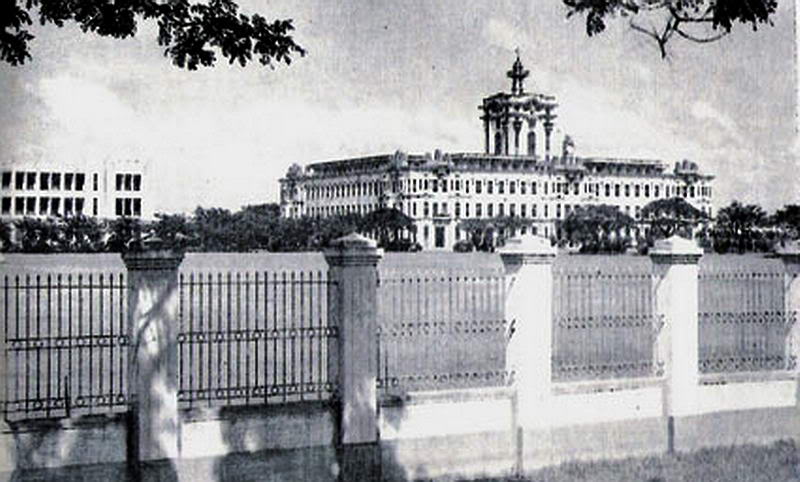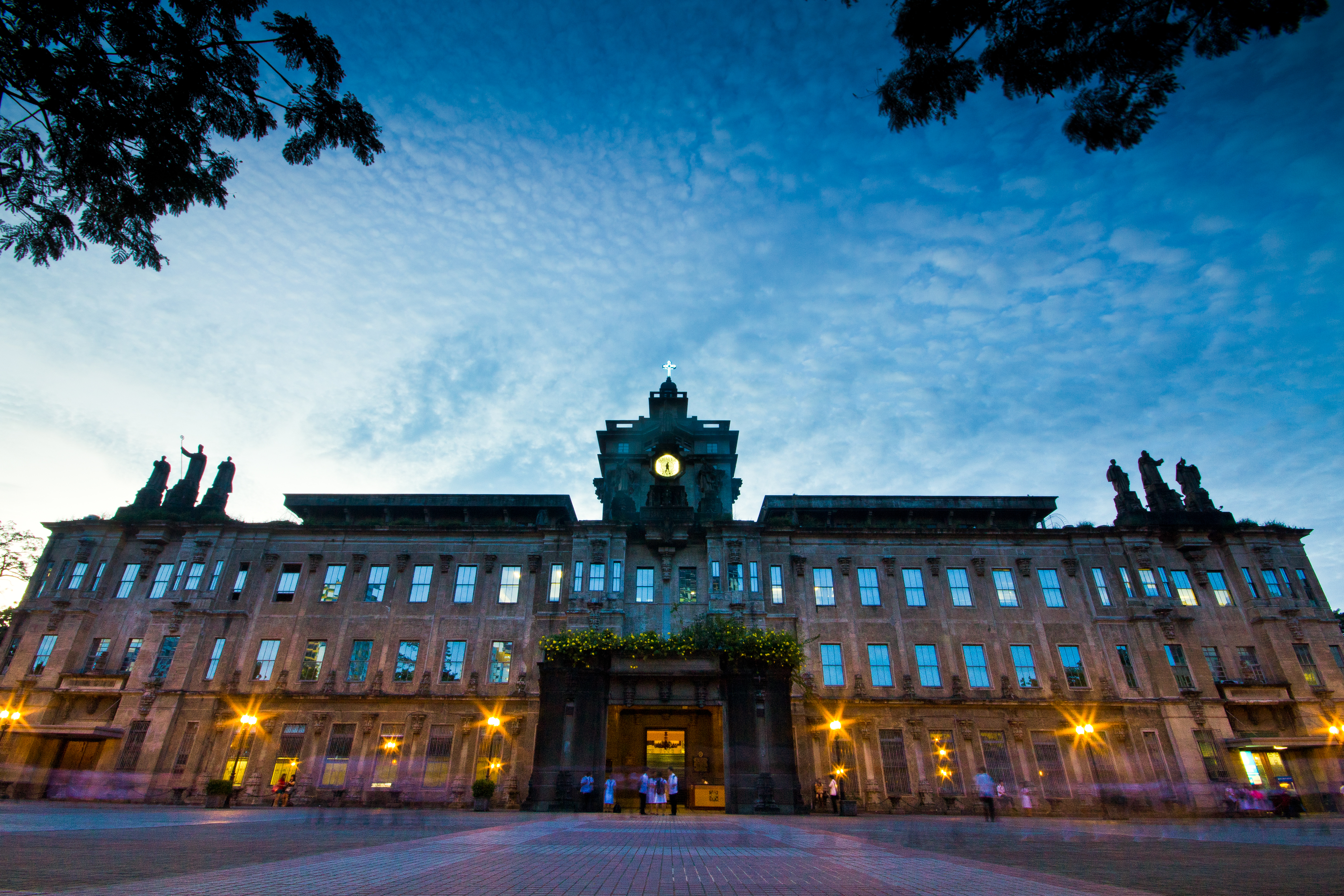|
University Of Santo Tomas Baybayin Documents
The University of Santo Tomas Baybayin Documents or UST Baybayin Documents are two 17th century land deeds written in Baybayin script. Due to their historical significance, the documents were declared as a National Cultural Treasure by the National Archives of the Philippines Director Victorino Manalo during the ''Second Baybayin Conference'' at the Museum of the Filipino People, Manila on 22 August 2014. It was the first declaration made the Philippines' national archives and the first paper document declared as a National Cultural Treasure. It is the fifth declared National Cultural Treasure for the University of Santo Tomas (UST) after the declarations on the UST Main building, UST Central Seminary building, Arch of the Centuries, and UST Open Ground. Baybayin Baybayin historically refers to a Brahmic syllabic script used for the Tagalog language and was used in the Philippines before and early into the Spanish conquest. It uses three characters for standalone vowels a ... [...More Info...] [...Related Items...] OR: [Wikipedia] [Google] [Baidu] |
Archives Of The University Of Santo Tomas
The Archives of the University of Santo Tomas (AUST), also known in Spanish as the ''Archivo de la Universidad de Santo Tomas'', is located at the Miguel de Benavides Library in Manila. The AUST is the central repository of historical and rare documents pertaining to, but not exclusively, to the history of the University of Santo Tomas, one of the oldest existing universities in Asia, and the oldest institution of higher learning in the Philippines. The collections consist of historical documents such as Papal bulls, royal decrees, rare Filipiniana prints, historical treatises, addresses, sermons, novenas, catechisms in many Philippine languages, national periodicals, and academic records of all educational institutions in the Philippines during the Spanish period. The archives is also home to the only incunabula, or books printed before 1500, in the country. [...More Info...] [...Related Items...] OR: [Wikipedia] [Google] [Baidu] |
University Of Santo Tomas Field
The University of Santo Tomas Athletic Field and Open Spaces, located at the University of Santo Tomas in Manila, is a National Cultural Treasure as declared by the National Museum of the Philippines.National Museum declares UST structures as National Cultural Treasures 'University of Santo Tomas website'' accessed October 27, 2012Formal Declaration of UST National Cultural Treasures ''University of Santo Tomas Museum of Arts and Sciences website'' acces ... [...More Info...] [...Related Items...] OR: [Wikipedia] [Google] [Baidu] |
Miguel De Benavides Library
The Miguel de Benavides Library, also known as the University of Santo Tomas Library, is the main academic library of the University of Santo Tomas. The library has been in continuous service and its collection antedates the existence of the university itself. History The initial collection of the University of Santo Tomas's (UST) library came from donations; specifically from the private collections of the institution's founder, Fr. Miguel de Benavides and other benefactors including Fr. Diego Soria and Hernando de Los Rios Coronel. Other members of the Dominican Order also donated books concerning priesthood. UST's academic library was founded on July 24, 1611. It was originally hosted inside the University Building in UST's original campus in Intramuros and later establish presence in other buildings within the campus. Following the destruction of the Intramuros campus, the library moved in to the Main Building at the university's new campus in Sampaloc, Manila. The library ... [...More Info...] [...Related Items...] OR: [Wikipedia] [Google] [Baidu] |
Santa Cruz, Manila
Santa Cruz is a district in the northern part of the City of Manila, Philippines, located on the right bank of the Pasig River near its mouth, bordered by the districts of Tondo, Binondo, Quiapo, and Sampaloc, as well as the areas of Grace Park and Barrio San Jose in Caloocan and the district of La Loma in Quezon City. The district belongs to the 3rd congressional district of Manila. History Spanish colonial era Prior to the arrival of the Spanish conquistadors to the Philippine Islands, the district of Santa Cruz was partly a marshland, patches of greeneries, orchards and partly rice fields. A Spanish expedition in 1581 claimed the territory and awarded to the Society of Jesus whose members are known as 'Jesuits'. The Jesuits built the first Roman Catholic church in the area where the present Santa Cruz Parish stands on June 20, 1619. The Jesuits enshrined the image of the Our Lady of The Pillar in 1643 to serve the pre-dominantly Chinese residents in the area. The image ... [...More Info...] [...Related Items...] OR: [Wikipedia] [Google] [Baidu] |
Tondo, Manila
Tondo is a district located in Manila, Philippines. It is the largest in terms of area and population of Manila's sixteen districts, with a Census-estimated 631,313 people in 2015 and consists of two congressional districts. It is also the second most densely populated district in the city. Etymology The name Tondo can be derived from its Old Tagalog name, Tundun as inscribed in the Laguna Copperplate Inscription of 900 AD, the earliest native document found within the Philippines. Dutch anthropologist Antoon Postma, the first to translate the copperplate, believes the term ''tundun'' originated from the old Indian language Sanskrit, which was used alongside Old Malay as a language of politics and religion in the area at the time. Before this landmark discovery, several theories (however incorrect now) existed. Philippine National Artist Nick Joaquin once suggested that it might be a reference to a high ground ("tundok"). On the other hand, French linguist Jean-Paul Potet, s ... [...More Info...] [...Related Items...] OR: [Wikipedia] [Google] [Baidu] |
Baybayin
(, ''pre-kudlít'': , ''virama-krus-kudlít'': , ''virama-pamudpod'': ; also formerly commonly incorrectly known as alibata) is a Philippine script. The script is an abugida belonging to the family of the Brahmic scripts. Geographically, it was widely used in Luzon and other parts of the Philippines prior to and during the 16th and 17th centuries before being replaced by the Latin alphabet during the period of Spanish colonization. It was used in the Tagalog language and, to a lesser extent, Kapampangan-speaking areas; its use spread to the Ilocanos in the early 17th century. In the 19th and 20th centuries, survived and evolved into multiple forms—the Tagbanwa script of Palawan, and the Hanuno'o and Buhid scripts of Mindoro—and was used to create the constructed modern Kulitan script of the Kapampangan and the Ibalnan script of the Palawan people. Under the Unicode Standard and ISO 15924, the script is encoded as the Tagalog block. The Archives of the University of Sa ... [...More Info...] [...Related Items...] OR: [Wikipedia] [Google] [Baidu] |
Philippines
The Philippines (; fil, Pilipinas, links=no), officially the Republic of the Philippines ( fil, Republika ng Pilipinas, links=no), * bik, Republika kan Filipinas * ceb, Republika sa Pilipinas * cbk, República de Filipinas * hil, Republika sang Filipinas * ibg, Republika nat Filipinas * ilo, Republika ti Filipinas * ivv, Republika nu Filipinas * pam, Republika ning Filipinas * krj, Republika kang Pilipinas * mdh, Republika nu Pilipinas * mrw, Republika a Pilipinas * pag, Republika na Filipinas * xsb, Republika nin Pilipinas * sgd, Republika nan Pilipinas * tgl, Republika ng Pilipinas * tsg, Republika sin Pilipinas * war, Republika han Pilipinas * yka, Republika si Pilipinas In the recognized optional languages of the Philippines: * es, República de las Filipinas * ar, جمهورية الفلبين, Jumhūriyyat al-Filibbīn is an archipelagic country in Southeast Asia. It is situated in the western Pacific Ocean and consists of around 7,641 islands t ... [...More Info...] [...Related Items...] OR: [Wikipedia] [Google] [Baidu] |
Tagalog Language
Tagalog (, ; ; '' Baybayin'': ) is an Austronesian language spoken as a first language by the ethnic Tagalog people, who make up a quarter of the population of the Philippines, and as a second language by the majority. Its standardized form, officially named ''Filipino'', is the national language of the Philippines, and is one of two official languages, alongside English. Tagalog is closely related to other Philippine languages, such as the Bikol languages, Ilocano, the Bisayan languages, Kapampangan, and Pangasinan, and more distantly to other Austronesian languages, such as the Formosan languages of Taiwan, Indonesian, Malay, Hawaiian, Māori, and Malagasy. Classification Tagalog is a Central Philippine language within the Austronesian language family. Being Malayo-Polynesian, it is related to other Austronesian languages, such as Malagasy, Javanese, Indonesian, Malay, Tetum (of Timor), and Yami (of Taiwan). It is closely related to the languages spoken in the Bi ... [...More Info...] [...Related Items...] OR: [Wikipedia] [Google] [Baidu] |
Arch Of The Centuries
The Arch of the Centuries ( fil, Arko ng mga Siglo, es, Arco de los Siglos) is a triumphal arch at the Plaza Intramuros of the University of Santo Tomas (UST) in Manila, in the Philippines that stands meters away from the university's ''Millennium Gate'' along España Boulevard. Half of the current structure, the side facing the UST Main Building is the ruins of the original Intramuros arch while the side that faces España Boulevard is a replica. The arch was formerly the original entrance to the university when the campus was still in Intramuros during the years from 1680 to 1941. It was declared by the National Museum as a National Cultural Treasure on 25 January 2010.Formal Declaration of UST National Cultural Treasures ''Universit ... [...More Info...] [...Related Items...] OR: [Wikipedia] [Google] [Baidu] |
University Of Santo Tomas
The University of Santo Tomas (also known as UST and officially as the Pontifical and Royal University of Santo Tomas, Manila) is a private, Catholic research university in Manila, Philippines. Founded on April 28, 1611, by Spanish friar Miguel de Benavides, third Archbishop of Manila, it has the oldest extant university charter in the Philippines and in Asia, and is one of the world's largest Catholic universities in terms of enrollment found on one campus. It is the main campus of the University of Santo Tomas System that is run by the Order of Preachers. UST was granted the title “Royal” by King Charles III of Spain in 1785. Pope Leo XIII made UST a "Pontifical" university in 1902. Pope Pius XII bestowed upon UST the title of “The Catholic University of the Philippines” in 1947. UST houses the first and oldest engineering, law, medical, and pharmacy schools in the country. The main campus is the largest university in the city of Manila and is home to 22 degree-gran ... [...More Info...] [...Related Items...] OR: [Wikipedia] [Google] [Baidu] |
University Of Santo Tomas Central Seminary Building
The University of Santo Tomas Central Seminary Building currently houses the Santísimo Rosario Parish, the Central Seminary, and the Faculties of Ecclesiastical Studies of the Pontifical and Royal University of Santo Tomas in Manila. The Parish was canonically inaugurated on April 26, 1942 by Michael J. O'Doherty, the Archbishop of Manila.Santissimo Rosario Parish of the University of Santo Tomas ''Santissimo Rosario Parish website'' accessed October 26, 2012 On January 25, 2010, the formally declared the Central Seminary Building as a ''National Cultural Treasure''. [...More Info...] [...Related Items...] OR: [Wikipedia] [Google] [Baidu] |
UST Main Building
The Main Building of the University of Santo Tomas (UST) in Manila, Philippines functions as the university's administrative center, and home of the Faculty of Civil Law, Faculty of Pharmacy, and the College of Science. The Main Building is also the home of the Museum of Arts and Sciences. Building The building, designed by Fr. Roque Ruaño, O.P., is the first earthquake-resistant building in the Philippines. Ruaño was influenced by Frank Lloyd Wright's Imperial Hotel, Tokyo. Design and structure In 1920, Roque Ruaño was assigned to draw up plans for the UST Main Building to be constructed at the Sulucan property of the Dominican Order. During the years 1922 and 1923, the plans were finally completed. However, some fine tunings may have been made on the design criteria as a result of the new lessons learned from the Great Kantō earthquake of September 1, 1923 which flattened Tokyo and Yokohama.Tiburcio, R.A. (2007). Earthquake resistant: Structural features of the UST ... [...More Info...] [...Related Items...] OR: [Wikipedia] [Google] [Baidu] |




